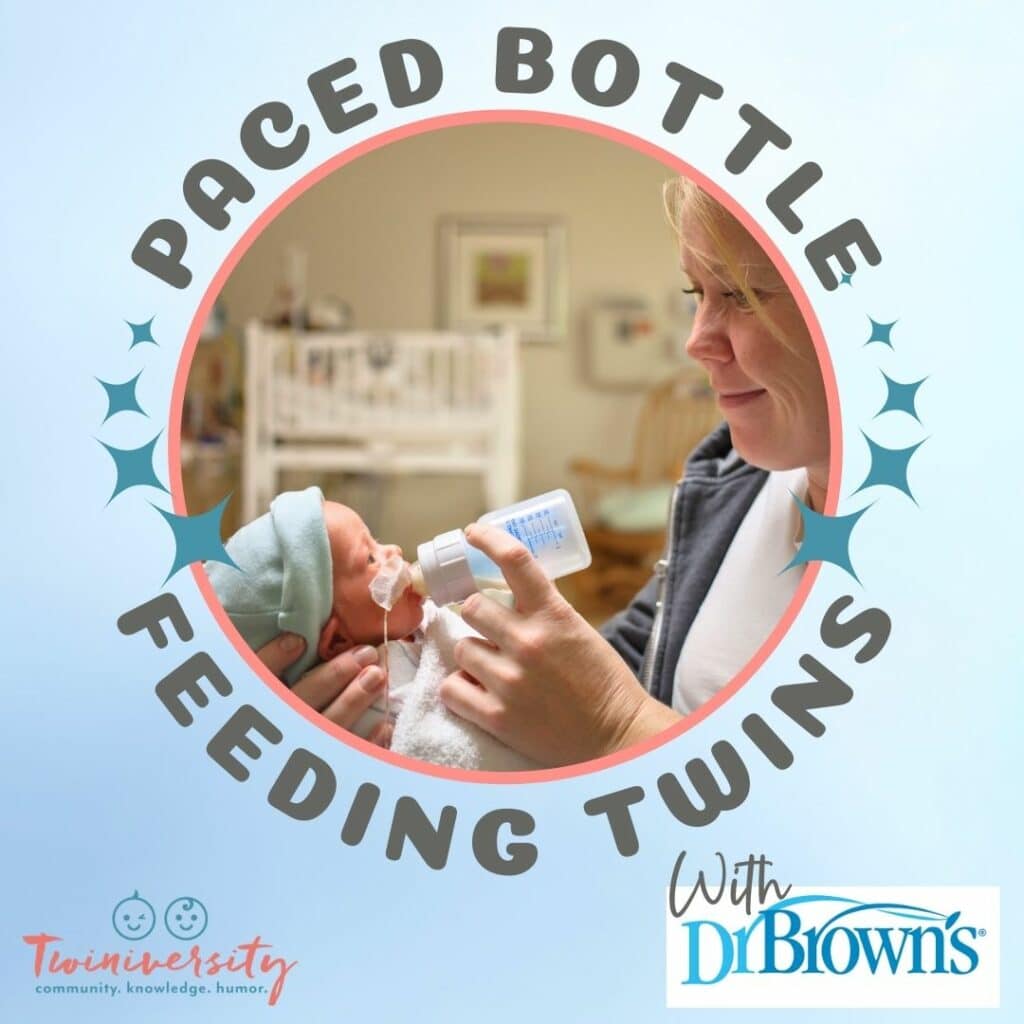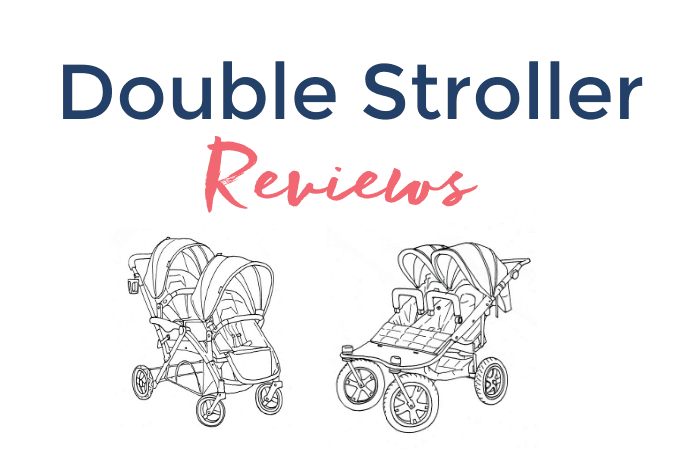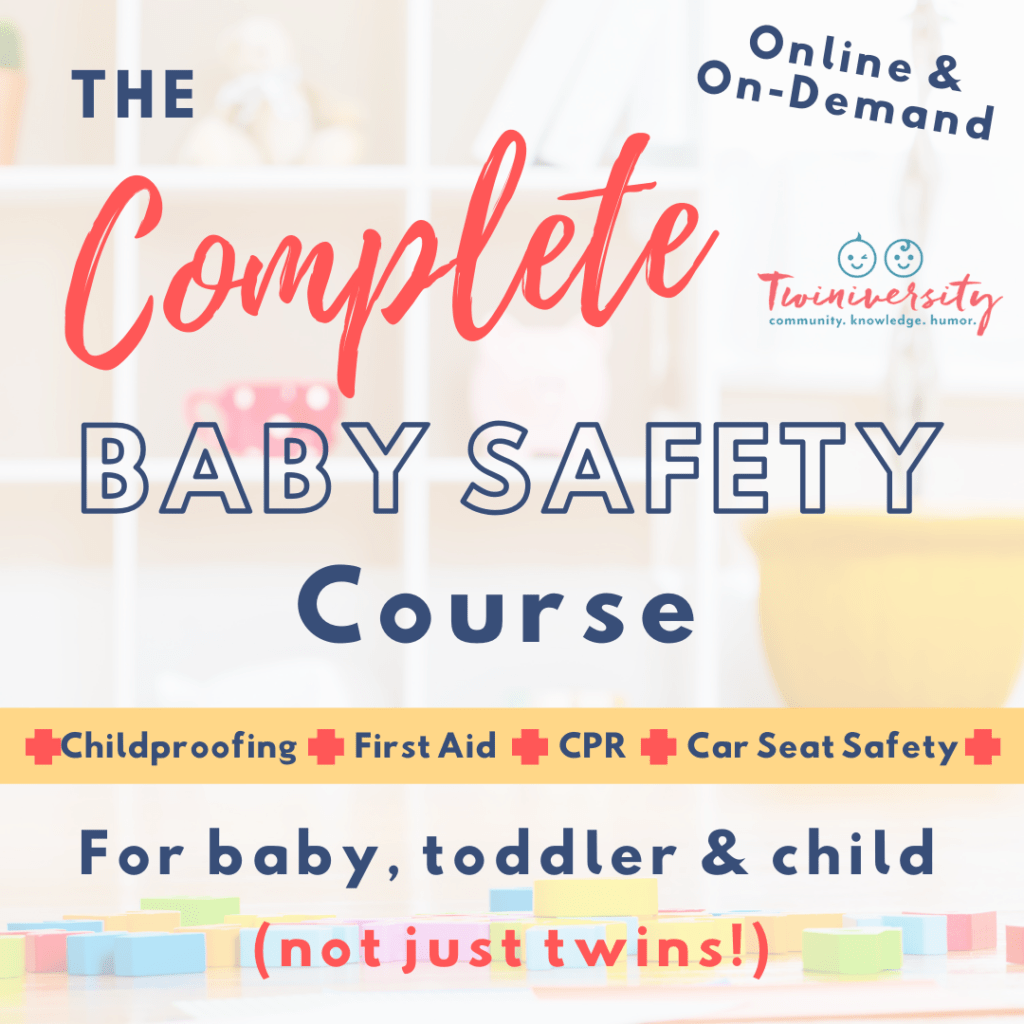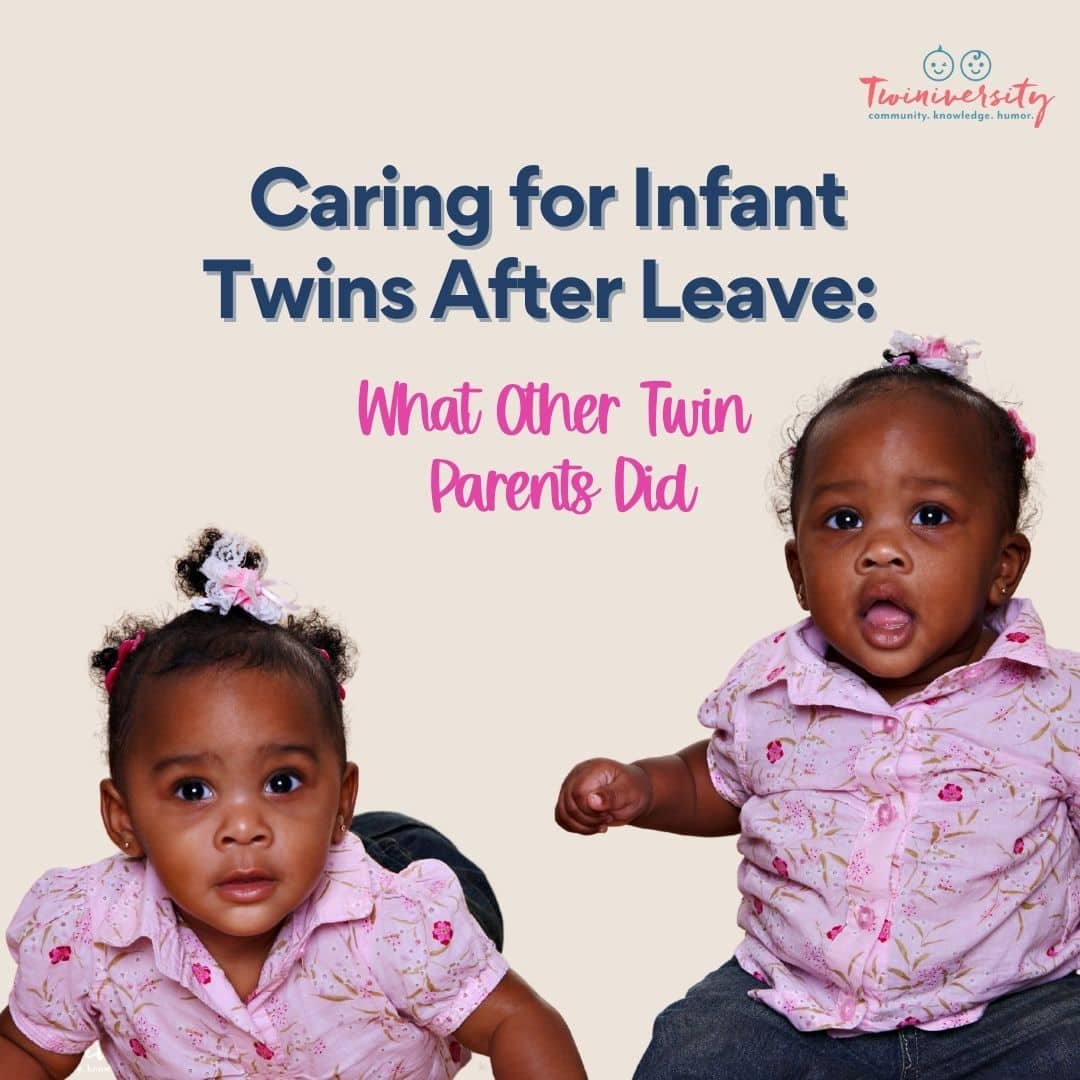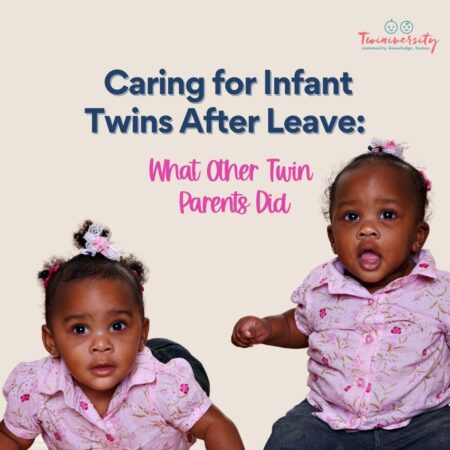Last updated on February 28th, 2024 at 04:21 pm
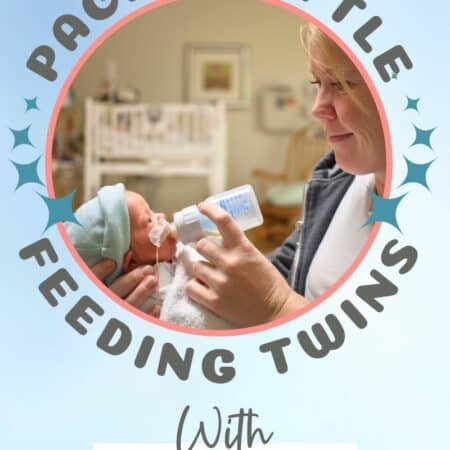
This article was written thanks to our partnership with Dr. Brown’s. Please enjoy and seriously consider pace feeding your newborns.
Here at Twiniversity we always say, “if by breast or by bottle, feeding your babies is best no matter how you get it in em’!” But if you are opting to go with a good ol’ bottle, we typically recommend “paced-bottle feeding” in the beginning. Keep reading to learn the benefits and techniques for paced bottle-feeding your twins. PLUS be sure to scroll all the way down to enter an amazing Giveaway from our friends over at Dr. Brown’s.
I am a neurotic mom. I believe knowledge is power and my collection of how-to books will show you just what I mean. I’m pretty much a black and white kinda mom and there isn’t much gray space in my world unless you are speaking of my wardrobe. Breastfeeding my babies was not my favorite. I hated that I never really knew how much they were getting, and oh my, every feeding felt like an eternity. But on the positive side, my babies didn’t spit up much, and they didn’t have gas issues (beyond the normal gassiness babies experience). Turns out that without realizing it, I was naturally practicing paced feeding with my babies. Who knew?
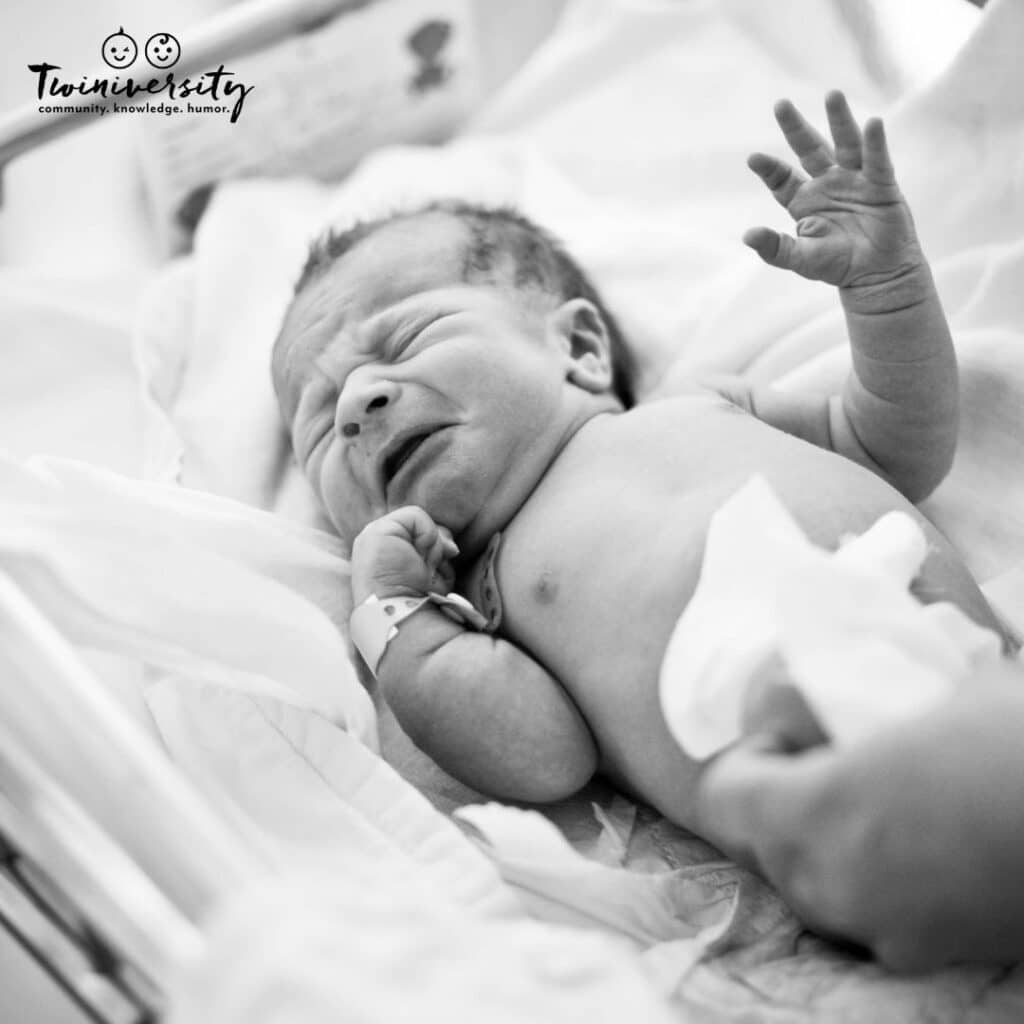
What Is Paced Bottle-Feeding?
Paced Bottle Feeding is a method of bottle feeding that allows your babies to be in control of how much they get and how fast they get it. Paced feeding is a parent controlled feeding method which slows down the flow of milk into your babies mouth, allowing your twins to eat slower, and take breaks and breaths inbetween swallows. When your babies are being bottle-fed, it is important to be aware of how much they are getting and at what speed.
Too much breast milk or formula too fast can make your babies very uncomfortable and cause some gastric distress and sometimes even choke.
Have you taken your expecting twins class yet? We offer a great class on demand so you can take it on your own schedule! There are so many video modules covering everything from your twins’ baby registry to your first week at home with twins! Sign up today to get started before your twins arrive.
Benefits of Paced Bottle-Feeding Twins
Doctors and lactation experts recommend using a paced bottle feeding technique to help your babies learn how to eat at a slower (paced) speed to avoid overfeeding, choking, and reducing spit-up. What are the benefits of Paced Bottle Feeding for your twins?
Paced Feeding Helps Avoid Overfeeding
Bottle feeding can be easier for babies. Milk flows more consistently and easier from the bottle than from the breast so babies tend to consume more milk from the bottle. Paced bottle feeding is meant to mimic breastfeeding therefore helping to ensure your twins don’t eat too much too fast.
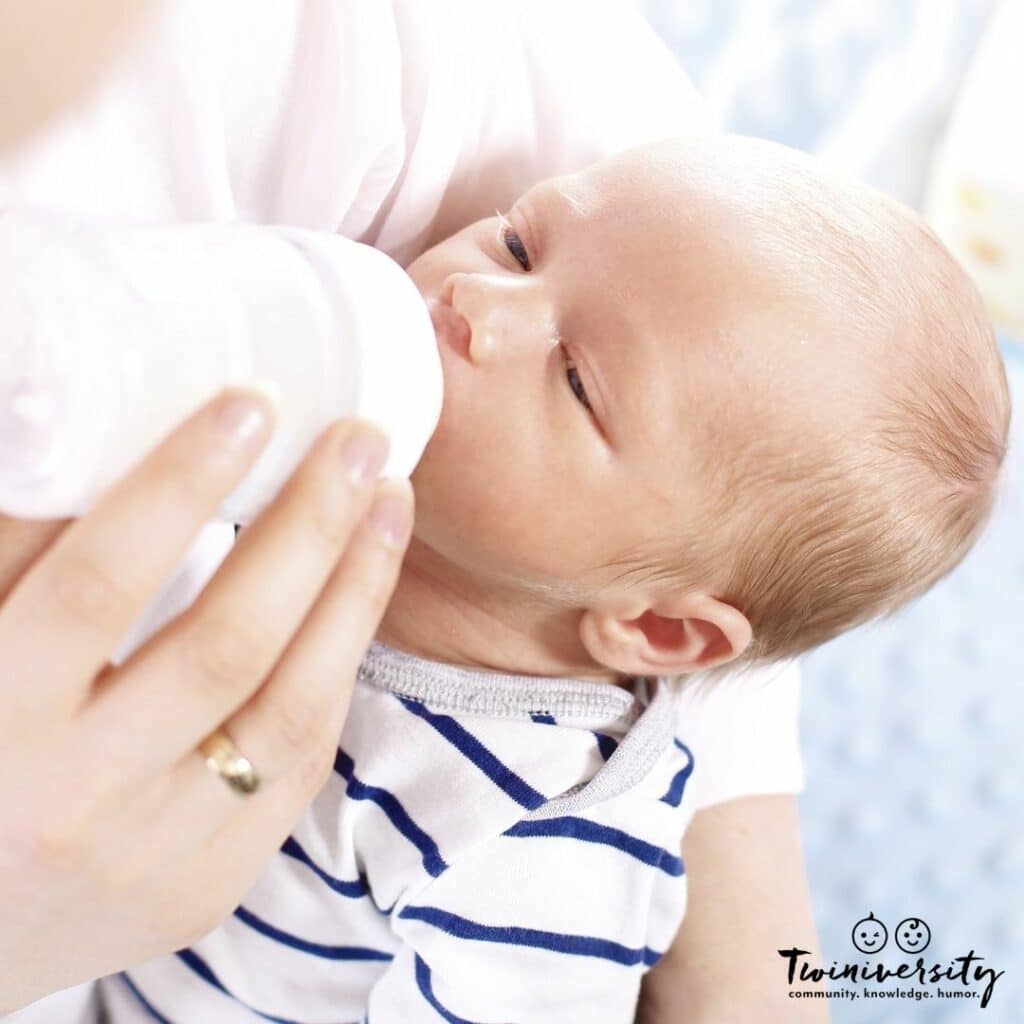
Paced Feeding Helps Reduce Choking
Paced bottle feeding is also beneficial because it reduces the chances of your babies choking on their milk. It allows them to drink more slowly, which can help them avoid gulping down large amounts of milk too quickly and take gentle breaths in between.
Paced Feeding Helps Reduce Spit-up. Paced bottle feeding allows your baby to feel more in control of their drinking. If you just let them chug chug chug it allows them to take in too much air, which can cause spit-ups.
Why Do Paced Bottle-Feeding?
We talk a lot about this in our online breastfeeding class and Twiniversity Expecting Twins Classes. If you are exclusively bottle feeding, allow their babies to have at it and tip the bottle all the way over allowing the maximum amount of milk to come out. This is an old-school practice, and in fact, we are STILL updating all our articles here on Twiniversity which recommend this practice. But do not…we repeat, do not have your babies “chug chug chug chug chug” at first. Start slow and steady. Instead of having your babies gulp, you want your babies to follow a slow but steady sip in a gentle suck-swallow pattern. This is especially important if you have babies that have reflux or are doing a combination of breastfeeding and bottle feeding.
When you are breastfeeding, your babies have to work harder to draw milk from you. It doesn’t just leak into their mouth. But with bottle feeding, even with a slow-flow nipple, milk will flow out without much effort at all. It won’t be a stream of milk, but it will be fast enough that your babies will not have to work too hard for it. You will want to try to do paced feeding to mimic a natural slow flow of breastfeeding so it will always be as much of a flawless transition from breast to bottle as possible.
How to Practice Paced Bottle Feeding with Twins
Place the nipple in your baby’s mouth and hold the bottle parallel to the floor, allowing the milk to start flowing into their mouth slowly. Every 10 or 20 seconds, you tip the nipple towards the top of the baby’s mouth to stop the milk flow. Then repeat throughout the feeding. As your baby gets older and learns how to pace themselves, you can stop doing this.
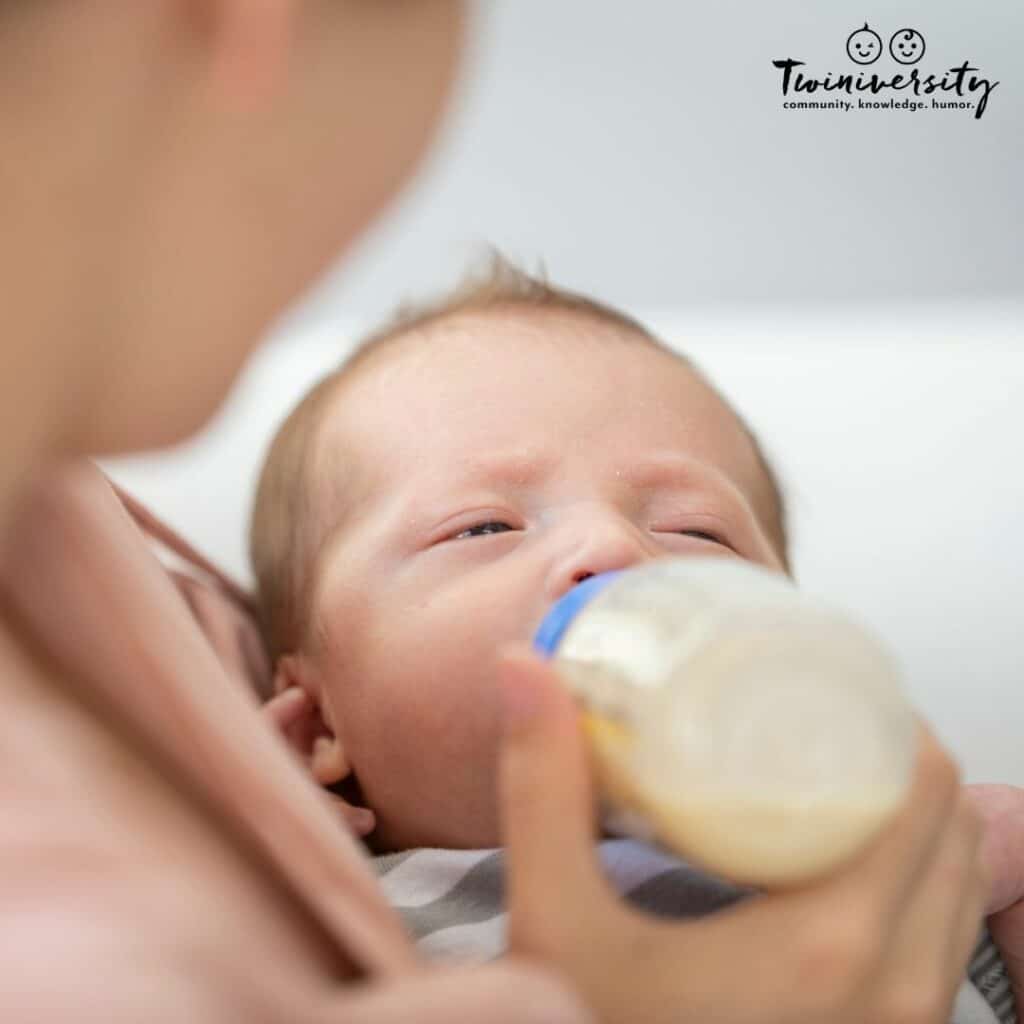
Signs Your Baby is Getting Milk too Fast
There are certain signs to watch out for that can indicate that your baby is getting milk too quickly.
Spit-up or Regurgitation After Eating
When babies eat too quickly, their little bodies can’t handle the amount of milk they are consuming. Causing them to become gassy and spit up more frequently than usual. If they are drinking more than their little bellies can hold, you’re gonna get some spit up or regurgitation after feeding.
Body Language
If your babies appear to be fussy or uncomfortable during or right after feedings, they might be eating too fast. Your baby’s body language will indicate if they are not enjoying their feedings. Which could be a sign that the milk is coming too quickly for them.

Bloated and Extra Gassy
If you notice that your babies are bloated or gassier than usual, they could be getting their milk too fast.
If your babies are showing you any of these signs, you will want to slow down their milk flow. The easiest way to do this is with the level of nipple you are using and to pace feed. Think of it this way, if you were guzzling water and you knew more was coming, you’d take BIG breaths between guzzles. A baby will do the same thing and can put a lot more air in their tiny belly than they need which will make them uncomfortable.
Nipple Level for a Slower Milk Flow
Before you master paced feeding, take a look at your supplies. The right infant bottle nipple can make a world of difference in ensuring that your babies get the nutrition they need. While also preventing them from consuming too much milk at once. Let’s have a little nipple chat, shall we?
Nipple Level 0
Level 0 is the smallest nipple size available. This level is also known as the premie size nipple. The small nipple size helps to safely regulate how much milk each baby receives. Ensuring they don’t take in too much at once.
Are you looking for the best double stroller for twins? Not sure if you should go for a tandem stroller or a side-by-side stroller? And what about a Snap N’ Go? We’ve got all the details for you in our double stroller resource. Click here to learn more… and while you’re at it, check out our expecting twins classes and the Twiniversity shop!
Nipple Level 1
Level 1 nipples should be used when your babies are newborns or young infants. This type of nipple has a slow flow that is designed to mimic breastfeeding and help prevent swallowing air.
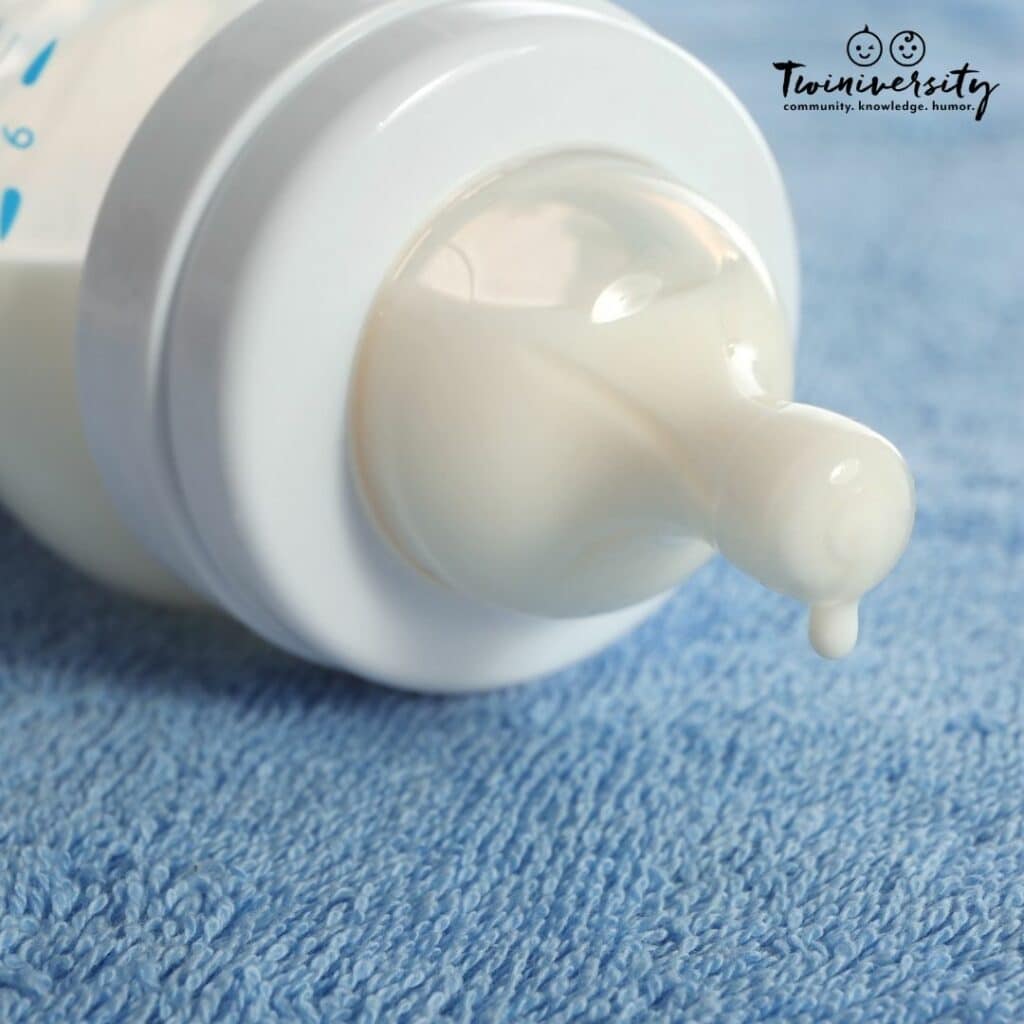
Nipple level 2
Level 2 nipples are typically reserved for infants aged 4-6 months and up. They have a larger internal valve than level 1 nipples, allowing babies to take in more milk with each swallow. This helps them transition from slow-paced feeding to faster-paced feeding as they grow older.
Nipple Level 3
Level 3 nipples have a larger hole, allowing babies to take in more milk with each swallow. These nipples should be used for babies 6 months of age or older.
Start off Slow With Your Baby Bottle Nipples
All bottles come with Level 1 nipples. This is a standard flow for newborns and the level most bottles come with when you first make your bottle purchase. If you have preemies, your NICU may send you home with preemie-size nipples, which is the slowest flow available. As your babies age, they may start getting frustrated that the flow is too slow. Sometimes even falling asleep during a feed becasue it’s such hard work! At this point, you’ll want to switch to level two nipples but you need to talk to your doc first. Always be sure you’re kiddos are ready for a transition. And don’t forget to always remember to burp your babies regularly, as this can help reduce their chances of becoming uncomfortable or gassy.
Need some baby safety training? Take the Twiniversity Complete Baby Safety course, offered on-demand. Includes video modules on infant, toddler, and child CPR, first aid, and common medical ailments, plus car seat installation and safety and childproofing your home. Click here to learn more!
Why Dr. Browns Is The Best Bottle For Paced Bottle-Feeding Twins
It’s no secret that we (Twiniversity) love Dr. Brown’s bottles! We have good reason to. Dr. Brown’s not only makes a great bottle, but they are also the brand trusted in most NICUs for feeding preemies.
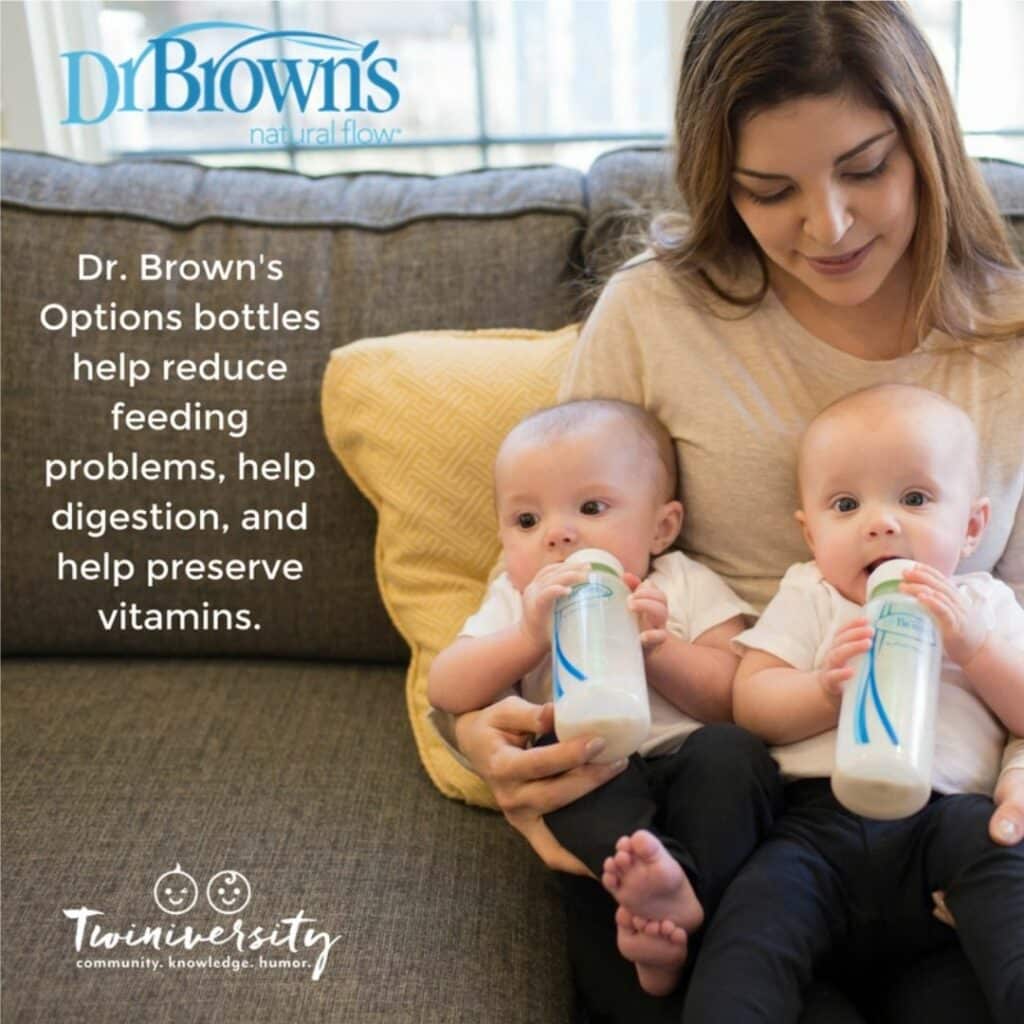
Dr. Brown’s bottles are designed with an internal venting system that helps reduce air ingestion during feedings and prevents vacuum pressure buildup in the bottle. This helps to create a slow and steady flow of milk that mimics the slow, natural flow of breast milk. The bottles also come with an angled nipple design that encourages your babies to maintain a natural latch. Plus, Dr. Brown’s bottles are designed to be easy to hold, so you can comfortably feed your twins at the same time.
Paced bottle feeding is a great way to keep your twins from overfeeding and reduce their spit-up. Dr. Brown’s bottles provide a slow, steady flow of milk that mimics the natural flow of breast milk and reduces air bubbles. With Dr. Brown’s bottles and paced bottle feeding, you can ensure that your twins are eating at the right pace and are getting all the nutrition they need.
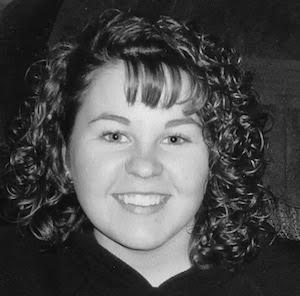
Twiniversity Staff Writer

